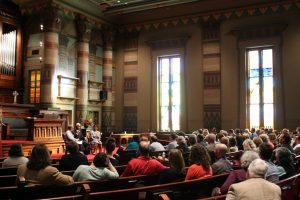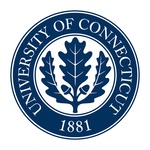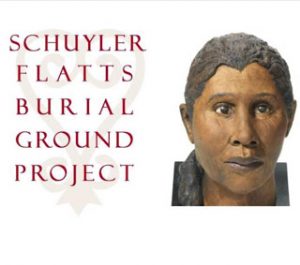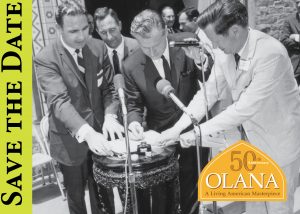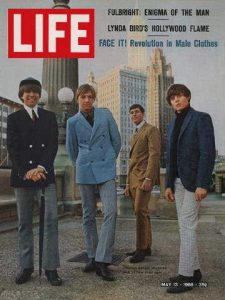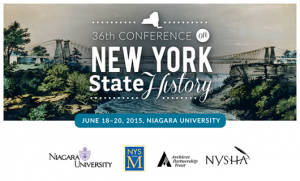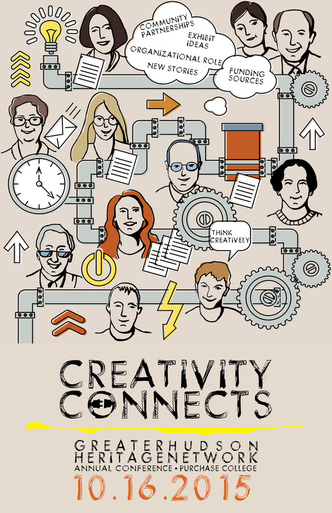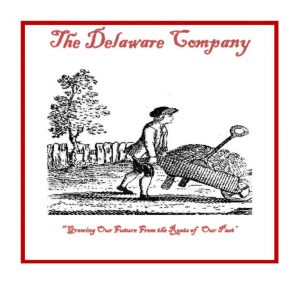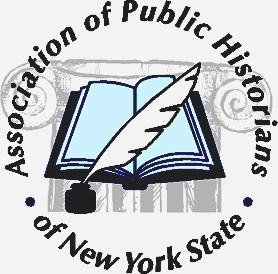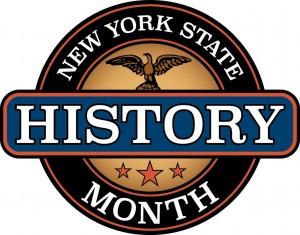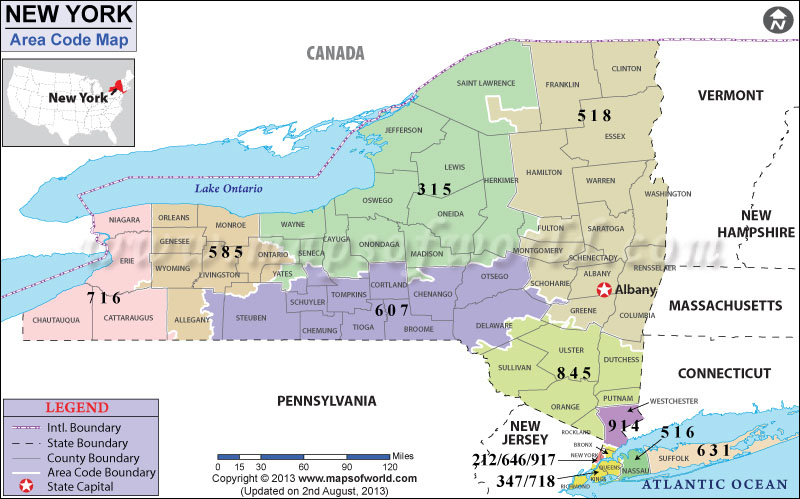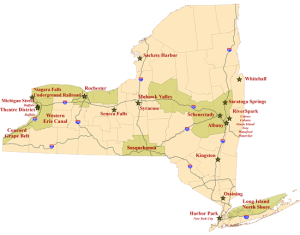
Imperiled Promise: The State of History in the National Park Service is a study conducted by the Organization of American Historians (OAH) at the invitation of the National Park Service (NPS) published in 2011. The study was featured in a pre- conference workshop on June 12, 2014, at the Henry Wallace Visitor Center located at the NPS site in Hyde Park. It was a free public program prior to the annual New York State History conference held at nearby Marist College. On this centennial day of the NPS, it is constructive to look back at that session.
The title of the session was “Imperiled Promise: Public History and Shared Authority at New York’s NPS Sites.” The session was chaired by Patricia West McKay, Martin Van Buren National Historic Site. The session is available online on its website.
McKay introduced the panel and called the study a critical analysis on the state of history within the NPS. She noted that the session was third occasion for a public discussion of the Imperiled Promise study, focusing here on the NPS in New York State. She spoke of the need to share authority, to listen to the audience, and to respond accordingly. McKay cited a blog written by New York State Historian Bob Weible on the tendency of people within the history community to be limited to their rut or silo and not to engage people outside that restricted view. The history community will never realize its untapped potential for making a difference in people’s lives as long as its practitioners fail to see the larger context.
As it turns out, on May 29, 2014, just two weeks earlier, I attended a history roundtable in Albany convened by State Legislator Englebright [and attended by staff aide Devin Lander on his last day in that position]. The word mentioned again and again throughout the meeting was “silo” as it applied to the various fiefdoms within the NYS history fiefdoms in the government. I confess that I had never heard the word used as frequently as I did during this period. This usage brought home the fact that all the questions being raised about the NPS also apply to the NYSOPRHP, a point to be elaborated on when I turn to the Imperiled Promise study itself.
Christine Arato, the Chief Historian, NPS Northeast Region
Arato began her presentation with the disheartening comment that Imperiled Promise had landed with a glorious thud two years earlier. She expressed the hope that perhaps we now are ready to move beyond navel gazing. Arato characterized the report as a gift from strong allies and it addresses challenges many cultural organizations face not just government entities. This meeting was cited is a good platform for a conversation forum. Important issues included funding challenges, training, and grappling with the need for interdisciplinary collaboration to overcome the chasm between interpretation and history in the Park Service staff. This division proved to be a recurring theme for the speakers: there are those who do the research behind the scenes and those who are on the frontlines who deal directly with the public.
Arato noted the troublesome image of the concept of expertise in the current cultural climate. In that context, sharing authority becomes even more problematic. According to current social learning theory as presented by Arato, learning is best served by meaningful experiences, social interactions, and the resulting self-discovery. The emotional and the intellectual work together in an audience-centered learning experience.
Arato returned to the chasm which divides the NPS staff. The culture resource managers are document oriented – they study the artifacts from the past. That work contrasts with the delivery techniques needed to convey the information from the past to the audience of the present, the purview of the guides. The chasm between the two groups results in different approaches and expertises.
Arato then discussed three case studies to substantiate her concerns. The first involved the recent bicentennial of the War of 1812. The NPS sought to include the voices of the Indian tribes who had participated in the war by speaking to the descendants to gather their memories of it. The collection of these traditions were subject to an academic review to determine which ones and how they could be presented on the NPS website. She observed that the submissions from the Indian tribes were limited to solely Indian topics and that there was no such submission on Andrew Jackson, for example.
The second case study combined social learning and media focusing on the specific subject of women’s rights. The NPS invited students to create videos about these rights. Different approaches were taken as students from different genders, sexual preferences, and religions participated in responding to the general question of one’s place in America. The public presentation of the students’ work led to a vitriolic response as if the NPS had endorsed certain perspectives expressed by these students. One might add that the reaction to these student creations probably provided a better emotional meaningful learning experience based on social interactions than did the creation of the presentations themselves.
The third case study looked inward to the training and preparing of the staff to work in a climate of shared authority. “Authority” is an issue within the NPS. To facilitate conversations on social media is a new experience for the government organization. Arato asked what is the place of our institutions, what are we prepared to do, what is relevant? Again she referred to the chasm between cultural interpretation and shared authority in ranger-led programs.
She concluded with a call to action to the NPS in its second century. It needs to develop history lessons that are participatory events for new audiences so they may learn about their American heritage.
How will we make this happen? Teaching about the past is insufficient. There is a need to build the capacity for historical thinking, to create an inquiry based model. She used the metaphor of journey for identifying the mileposts for the development and evaluation feedback needed. Arato acknowledged that the shared promise [hopefully not imperiled] and tacit goal is to create informed citizenry with critical capacities. She declared an activist bent for the NPS and then asked: is this the right thing for the NPS to do in leading social change? What are the goals and expertise needed? What does the audience think? [Spoiler alert – there was no real facilitated conversation with the audience on the questions Arato raised.]
Justin Monetti, Site Manager at the Martin Van Buren Historic Site
Monetti brought an interpreter’s perspective on shared authority drawing on his own experiences in the field dealing with the general public. In the beginning, rangers drew on the military example. The NPS was a hierarchal organization with a uniformed staff. The tours were not history-based but guides in the parks where knowledge of what people saw in the hike was imparted to them by the expert. The ranger then was a figure of authority.
The situation has changed. Now there is a need to relate to others. The personal experience needs to replace sterile tours. Rangers need to know what they are talking about, who the audience is, and the delivery techniques appropriate to create a learning opportunity. Echoing the previous speaker, Monetti said memories are stronger when delivered in the context of an emotional response. There is a connection between the intellectual and emotional responses. Rangers must facilitate connections between our resources and the audience. They must craft programs tailored to audience responses. The one-dimensional programs where the only feedback is in the observation of audience by the ranger looking at them is out. The best programs produce tears!
Programs must be personally relevant and this necessitates a cultural consciousness of the audience. However, that audience is a high-volume one at many sites and it spends only a short time with the ranger.
During these close encounters of the brief kind, rangers typically avoid controversy. Public speaking can be scary! Especially for young part-time summer guides. There is a fear of the heckler or the know-it-all in tour. There is a fear of letting the visitor control the program. The culture of fear creates an anxiety in rangers over loss of control of the tour. Rangers also fear being chastised if they violate the official approved history they have been given and instead explore additional interpretations through the lens of the audience. That can be frightening.
Monetti recognized the need to develop techniques to invite engagement, to facilitate dialog, to promote civic engagement and civic skills. Rangers needed to overcome the current fixed and fearful approach to avoid controversy. He pointed out the audience (and got a laugh from this one) by saying that for rangers preservation of one’s job takes precedence over expressing creativity as a priority.
These musings raised the issue of exactly what the NPS should celebrate during the centennial. It presents an opportunity to encourage dialog on what we mean to society now. We need to recognize the desire to continue learning over one’s lifetime as part of defining the future for the NPS. Yet Monetti also noted a study that shows that visitors spend on average 3 minutes on rim of the Grand Canyon and 20 minutes in gift shop. How does one create conduits between past and present in that context? To change the format is a frightening prospect. How do we shift as an organization so people seek us out about the changed perspective?
Monetti touched on many critical issues. To continue the metaphor of the chasm and the Grand Canyon, he stands on the brink of change without directly seeing it. The high-volume short-visit model probably is less applicable to historic sites than to natural sites where it is easier to wander around the visitor center and see the spectacular sights on one’s own. The missing ingredient in Monetti’s analysis is the need to restructure the visit at historic sites by the tourist so the process of engaging the audience changes as well. Retraining the guides no matter how knowledgeable they become is not enough if the tour guide format remains the same. I will pursue this observation in a subsequent post on the Imperiled Promise.
Vivien Rose, Women’s Rights National Historical Park
Rose began by asking “When did you start caring about the past? About a dead person and then went on to learn?” She answered her own questions by recounting an experience she had in high school. That experience contributed to her obtaining a Ph.D. in history and her present job.
She called history the story we tell to each other about the past. It is not a static story or one of just stating the facts. At the site where she works, a question was placed on the bulletin board: “What will it be like when men and women?” Her review of responses led us to questions we didn’t even know we had. She challenged the people in the audience to share their passions. Yet she noted that the more she functions as a PHD, the less she can communicate with the public. Note – I wasn’t quite sure if she was referring to the time available to her given the requirements of research, the atrophy of skills since she had less opportunity to engage the public, or both.
For me, her talk was a natural follow-up to Monetti’s although not presented in that manner. The best way to have the research people engage the public is the way other research people, i.e., professors, do at colleges to students and in speaking to historical societies. I doubt there are any studies that suggest having people stand up for long periods of time often in the sun is the environment most conducive for learning. A better way is sitting down in a climate-controlled facility like the Wallace Center where the Ph.D. in history or the relevant subject can speak to the visitors, engage them in a facilitated discussion, and prepare them for what they are to see when they do walk around the site with or without a guide.
Marla Miller, University of Massachusetts
Speaking of history professors, the next and final speaker is one. I spoke with her after the session and she provided me the information about how to obtain a copy of the Imperiled Promise study which she helped write.
Miller began her engagement with this audience by expressing the hope that the study will gain traction within the NPS. The study was based on 544 detailed responses to a survey of NPS staff. The four historians who wrote the report had spent three years creating the survey. They concluded with roughly 100 recommendations and 12 findings [not all of which I will list in my future post!].
The chasm within the NPS hit the study team hard. It was something about which they had no awareness prior to delving into the inner workings of the organization. She forthrightly spoke of the challenge for NPS to overcome cultural resource and interpretation divide within the organization. Miller saw a long road ahead if the pernicious problem of this divide was to be overcome.
Miller mentioned the silo of history practice in NPS.
One critical finding of the study was the need to expose NPS staff to ongoing scholarship in the field. The staff needs to be current. The staff needs to be able to knowledgeably respond to the questions posed by the public. The staff needs professional development training just as professors do who attend history conferences and social studies teachers do in content-based professional development programs [the underlying principle of Teacherhostels which has visited NPS sites].
Miller noted the rapid changes in the NPS since 2008 when the survey began. One obvious one is the flourishing embrace of social media. She spoke of the preference people have to be where the messy stuff is, ironically, the exact the motif mentioned in a panel in which she participated at the SHEAR conference in 2016.
Collaboration with the public is the core principle. Miller provided two of the recommendations from the study as the most important:
- The creation of a history leadership council within the NPS. The purpose would be to identify the leading lights in public history practices internal to the agency which then cold be disseminated to others. One might ask as there ever being a NPS history conference at the Wallace Center? The Center hosts numerous history programs and I have used it for teacher programs and history community meetings. But to the best of my knowledge, the NPS history staff in New York never meets collectively, nor does the NYSOPRHP. Imagine if the two groups held such a conference!
- The creation of a history advisory board to bring in people outside the agency. Again the comments about the history leadership council apply. There are OAH sessions at its annual conference on NPS topics now.
Miller commented that the test was still to come on these recommendations. Since her comments were in 2014, it would be interesting to know what progress has been made on the report received with a thud.
In the Q&A, Debi Duke, Teaching Hudson Valley conference and NPS, asked about how this conversation can trickle down to other sites outside the NPS. Miller agreed on the need. Leaders can talk the talk but it is the frontline interpreters at the grassroots level who are left hanging when the leaders omit to walk the walk. That is the piece that often gets lost. Monetti added that to develop capacity, training programs for all levels are needed on how to develop dialog with audience especially for someone just out of college.
McKay ended the session with the words: “This is not the end, only the beginning of the discussion.” What discussions have taken place since here in New York?
Historic Preservation Round Table (August 22, 2016)
Secretary Jewell, Congresswoman Lowey and Commissioner Harvey invited regional historic preservation stakeholders and advocates to Bear Mt. State Park to participate in a roundtable discussion on the issues and opportunities associated with protecting and preserving the country’s historical and cultural sites and structures. Participants in the forum discussed challenges to historic preservation, what works, sustainability of historic sites, and ways to engage new audiences and cultivate the next generation of preservationists. The dialogue provided valuable insight to the challenges and creative ideas that will shape historic preservation over the next 100 years. (Press Release from Representative Lowey)




